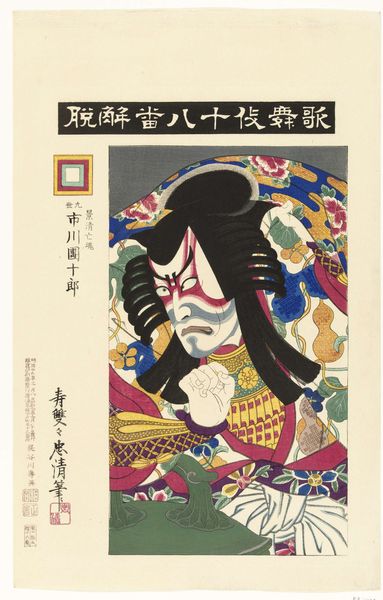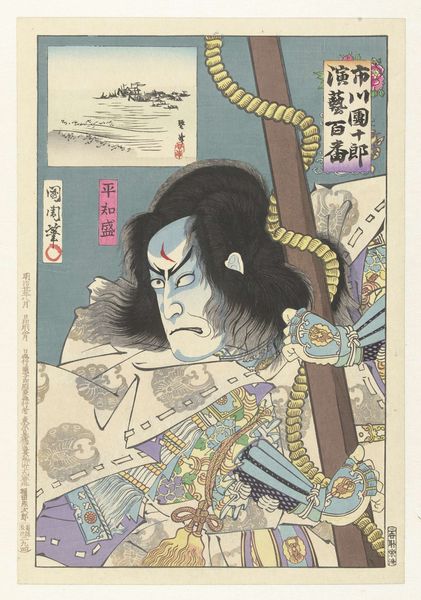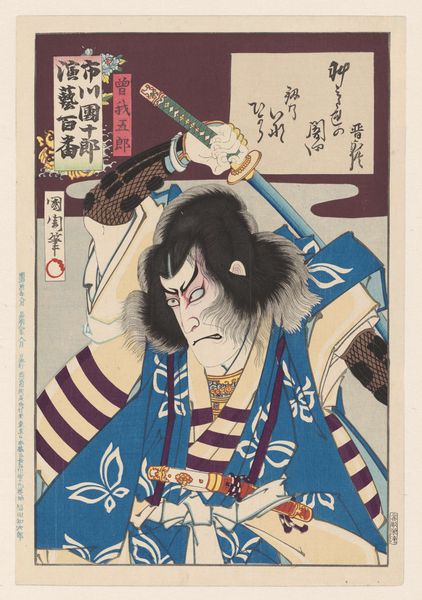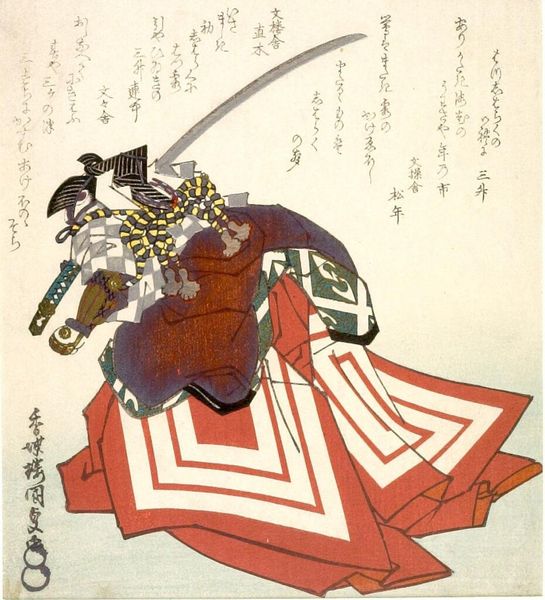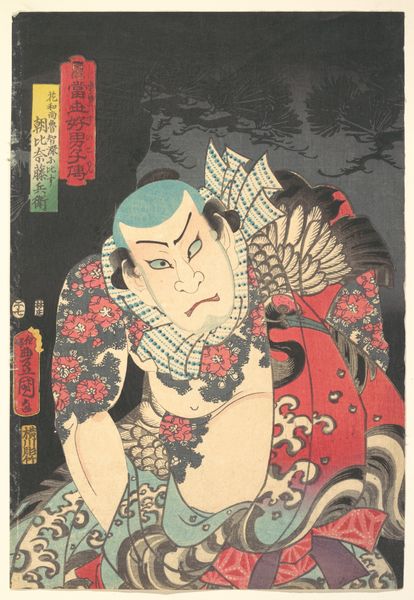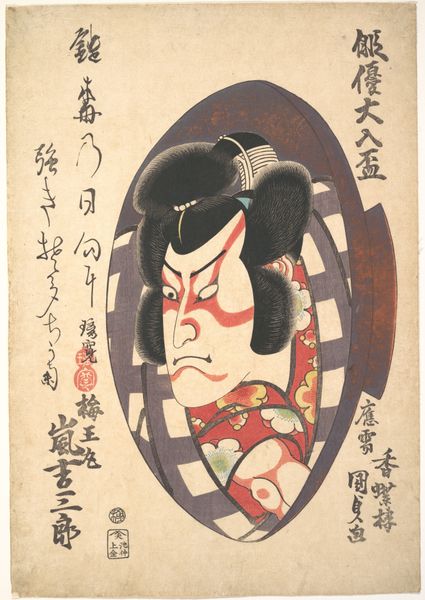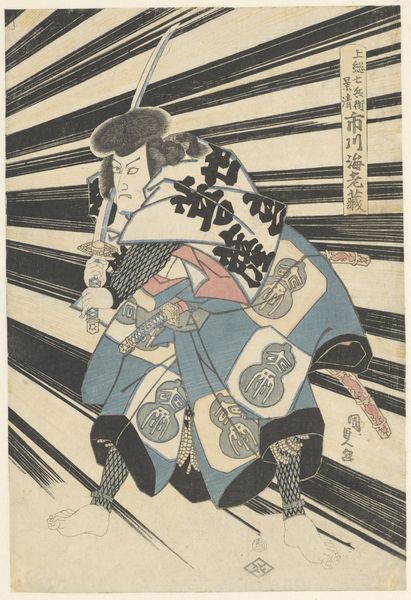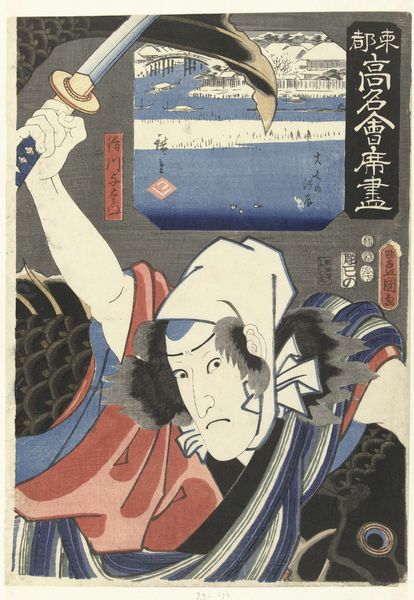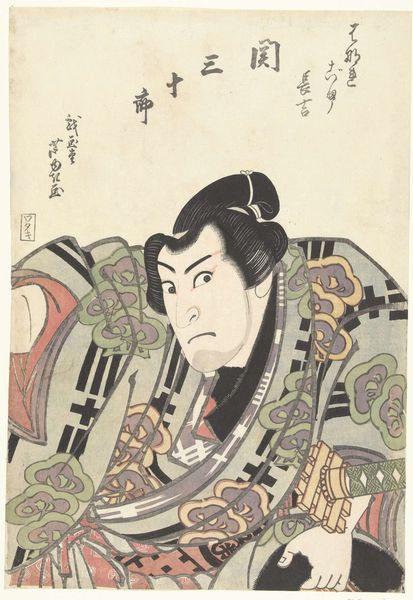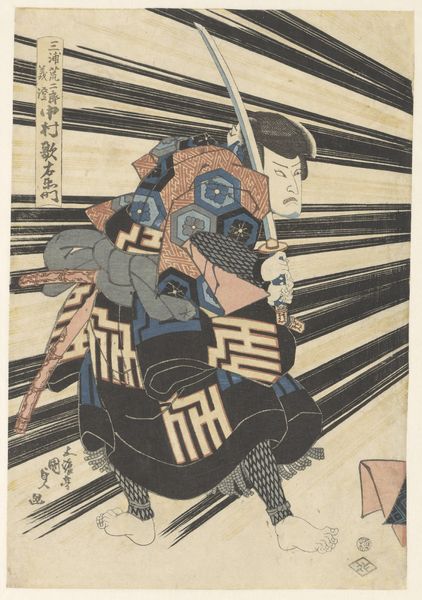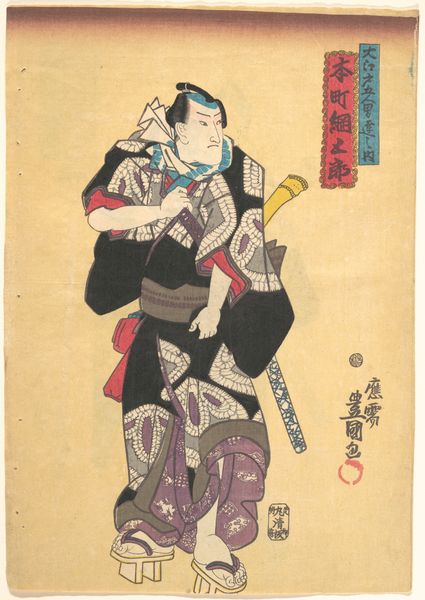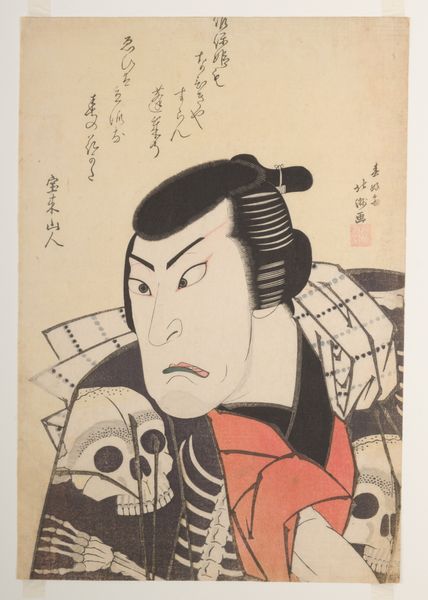
Dimensions: height 435 mm, width 277 mm
Copyright: Rijks Museum: Open Domain
Curator: This striking woodblock print, attributed to Torii Kiyotada and dating possibly from 1896, depicts Ichikawa Danjuro IX as Soga no Goro Tokimune. It’s a compelling example of Ukiyo-e portraiture. Editor: Compelling indeed! My immediate reaction is one of powerful artifice. The bold colors and strong, almost cartoonish, lines seem deliberately unreal. Curator: Precisely. The artist utilizes flat colour and emphatic lines to convey the essence of the Kabuki performance rather than striving for naturalism. Observe how the dynamic composition creates a sense of drama, focusing on the exaggerated expression and symbolic costume. Editor: Speaking of costume, the craftsmanship is apparent, despite the flat representation. Look at the implied weight and texture of the robes, the way the colors are layered to suggest depth, even in the lobster design, perhaps made by apprentices. I am interested in the tools, the carved woodblocks, the dye mixing that led to such a work of precise image multiplication. Curator: An astute observation! The emphasis is not merely on surface appearance, but on the underlying structure. Kiyotada harnesses the language of caricature to communicate a specific message about character and role. His technique employs not only form and color, but also the very performance tradition from which it comes. Consider the gaze: confrontational, almost challenging us. Editor: Absolutely, and consider the historical context. Kabuki wasn't just entertainment. It was a popular art form shaped by social conditions, class distinctions, and access to resources like dyes. It offers more insight than the aesthetic value that meets the eye. I keep thinking of those anonymous artisans who contributed their labor. Curator: Fair enough, but the formal arrangement—the interplay of geometric shapes and symbolic colors—is a carefully orchestrated performance in its own right. The negative space and textual placement are integrated masterfully, influencing the reading of the central figure. It represents an intriguing play between realism and deliberate unreality. Editor: Indeed. By focusing on the materials, labor and socio-economic background behind the performance and production, the piece gives the art new depth. It changes how you relate to it beyond formal appreciation. Curator: Ultimately, both approaches illuminate unique facets of this dynamic work, adding layers to our interpretation of its design. Editor: It's true; seeing the whole, material picture alongside the aesthetic, changes your understanding and offers greater meaning.
Comments
No comments
Be the first to comment and join the conversation on the ultimate creative platform.

